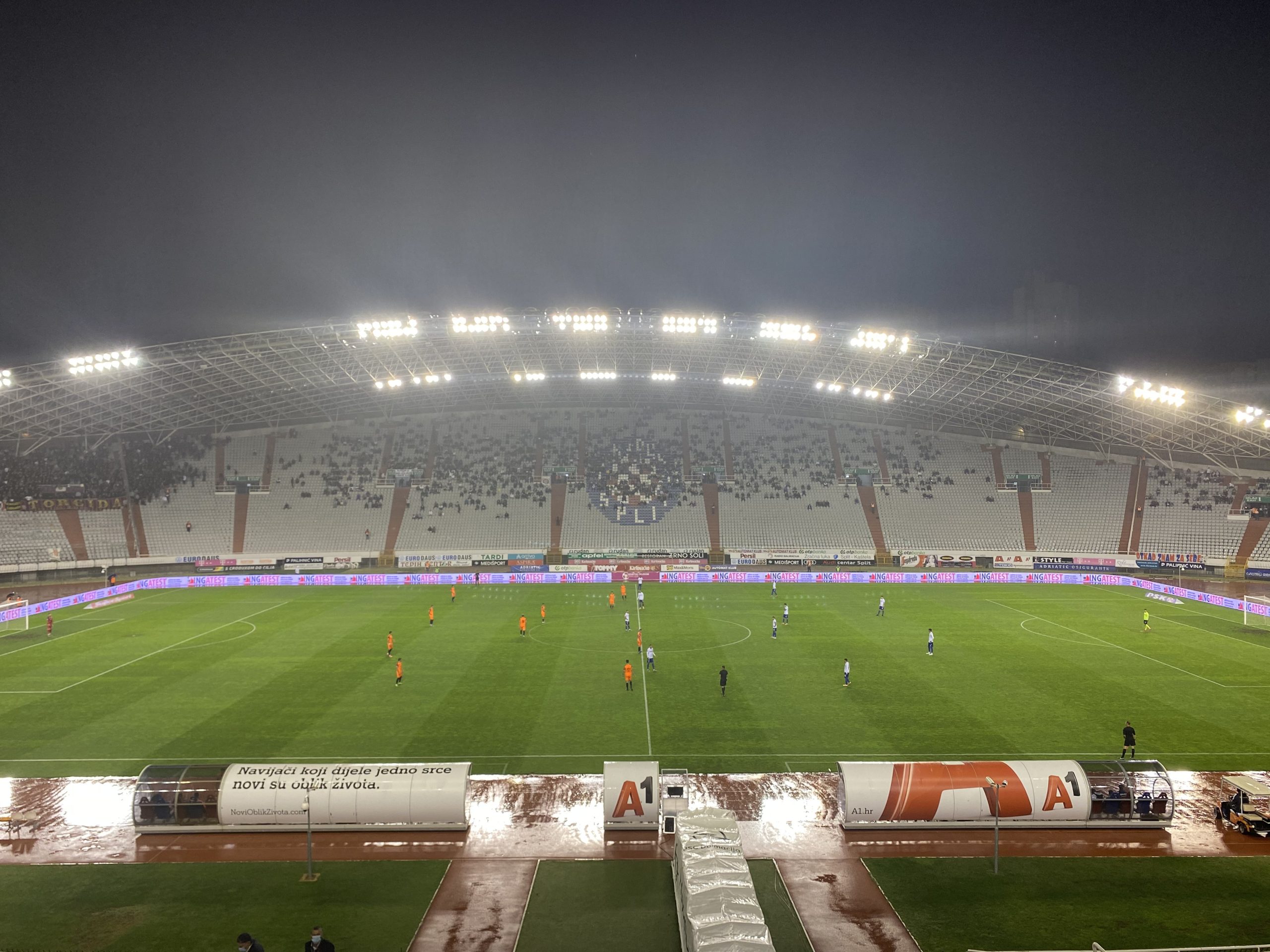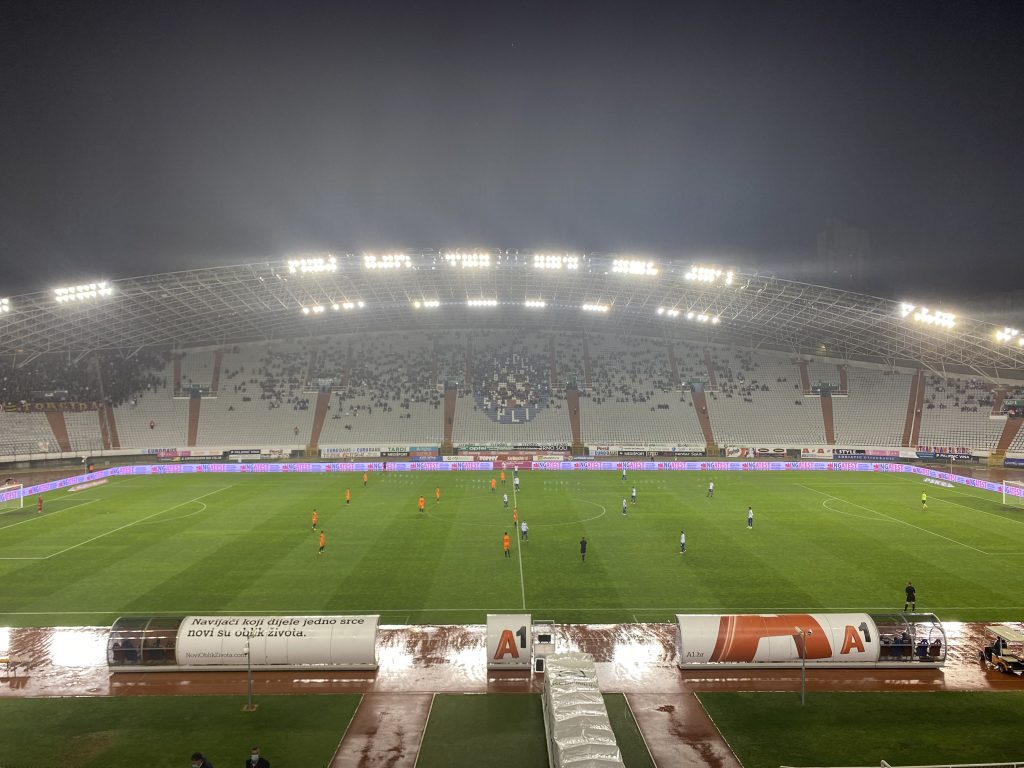
October 22, 2020 – Masks in Croatia are mandatory almost everywhere, though one law in the country forbids them inside football stadiums. Here’s why.
Slobodna Dalmacija writes that the first person from Croatia to be infected with the coronavirus was a young man who contracted the virus in the stands of the San Siro stadium in Milan, where he watched the Champions League match between Atalanta and Valencia on February 19.
When he returned to Zagreb, he ended up at the “Dr. Fran Mihaljević” Clinic, and on February 25, Croatia officially recorded the first case of COVID 19. Italian epidemiologists determined at the time that the match in Milan, which had 40,000 spectators, significantly affected the explosive spread of coronavirus in Italy.
Eight months have passed since then, the numbers of infected are higher than ever, we are breaking all records and setting up new hospital tents, and the crowds in Croatian stadiums are reminiscent of those in San Siro – because they don’t have to wear protective masks.
But here’s the catch – not only do they not have to, but they are now allowed to wear masks or face coverings inside the stadium. Here’s why.
Masks are prescribed in the open where the required distance cannot be kept, but not in the stands, because, according to the provisions of the Law on Preventing Disorderly Conduct at Sports Competitions, masking the face with a hat, scarf or otherwise to conceal identity is considered illegal behavior. When the law was passed, it never occurred to anyone that one day, masks would become a mandatory part of our everyday lives. Epidemiologists, therefore, prescribed only distance for stadiums, but not masks.
When the Croatian Institute of Public Health published the first epidemiological instructions (before spectators returned to the stadiums), they stated that masks were mandatory. However, this was short-lived. A new recommendation was soon published in which masks were not mentioned, but only a distance of a meter and a half and a measurement of body temperature on the day of the match.
Spectators are required by these recommendations to wear a mask as they move around the stadium, as they walk to their seats or wait in line for the toilet, but must remove it when they arrive at their seat.
Before the weekend match between Hajduk and Sibenik, fans were especially warned about the ban on consuming alcoholic beverages, lighting pyrotechnics, bringing banners that incite hatred and violence, and the ban on face coverings, which would make it difficult for the police to identify them should any chaos occur.
GNK Dinamo will begin competing in the Europa League group stage on Thursday, at 9 pm, when Dutch club Feyenoord will play in Zagreb. There will also be spectators in the stands, as the club announced, at 30 percent of the capacity of each section of Maksimir Stadium, and tickets will be on sale until the permitted capacity is filled. And there will be no masks in the stands. Just like last week at Poljud, the club announced that despite epidemiological recommendations, wearing masks at the stadium is not allowed under Article 4 of the Law on Preventing Disorderly Conduct at Sports Competitions.
Only after the match can we expect an assessment of how things went with respect to epidemiological measures, which in practice will be reduced because only 30 percent of the audience capacity is met.
Earnings are not enough for the club to profit from 30% of tickets, but there are still too many fans to control the spread of coronavirus, so the legitimate question is: why are spectators still allowed?
Epidemiologists cringed after fans failed to keep distance in the Croatian First League games, and previously in the games of the Croatia national team in Zagreb, but the Civil Protection Headquarters has not indicated that they will tighten the prescribed measures.
Slobodna Dalmacija asked the head of the National Civil Protection Headquarters Davor Bozinovic, leading epidemiologist Krunoslav Capak, and the executive director of HNS whether there will be any changes in the stands considering the record number of cases in the country, especially considering the previous experiences of non-compliance with measures at Poljud and Maksimir. No one has answered.
Unofficially, Slobodna learned that some members of the Headquarters are discussing re-implementing recommendations we had back in June, but no decision has been made.
Unlike in Croatia, the Greek government reacted urgently. Just after this week’s announcement that Greek sports fans will be able to go to stadiums and halls again from October 31, albeit in limited numbers, Prime Minister Kyriakos Mitsotakis said:
“Holding matches, even with a few spectators, would send the wrong message to the citizens,” thus rejecting the plan to return the fans to sporting events.
To read more about sport in Croatia, follow TCN’s dedicated page.








